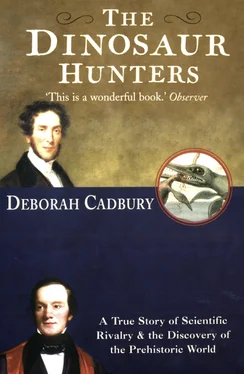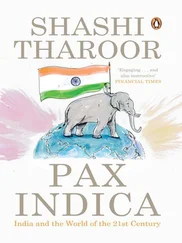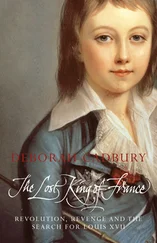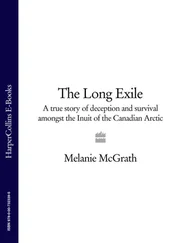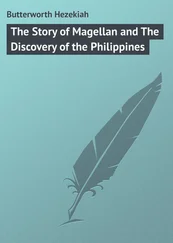But the more specimens he found, the more baffling the site became. Strangely, although he believed the animal bones belonged to an Ichthyosaurus, or sea lizard, he began to find the petrified remains of land plants. These fossils were difficult to interpret, some blackened like charcoal, with cracks and fissures filled with white crystalline minerals or the brilliant bronze of fool’s gold. As he scrutinised the stone, he thought he could discern fragmentary remains of leaves, stems and other ‘ligneous structures’, which appeared to be of vegetable origin.
Before 1820, very little was known of fossil botany. In the eighteenth century, Carl Linnaeus had developed a detailed classification system for plants, establishing in his catalogues of several thousand plant species from all over the world the ground rules that a botanist should follow to describe and name plants correctly. Since then, other scholars had occasionally attempted to identify fossil plants, but there were few systematic studies of fossil species before 1820, and names had no legal status. Faced with tantalising impressions of the relics of plants that he could not recognise, Mantell had no knowledgeable source to which he could turn. ‘I am unacquainted with any vegetables either recent or fossil with which these remains can be identified,’ he wrote.
During one trip to the quarry at Cuckfield in 1820 he had a breakthrough. He unearthed, buried with more giant bones, part of a tree trunk more than three feet long, very weathered, with the rudiments of branches. He could see at once that the trunk was covered in distinctive diamond-shaped scars, resembling woody bases where leaf stalks were once attached. This was nothing like the English trees around him, the familiar indentations on the bark of oaks, chestnuts and birches. The roughened surface of the trunk, the pattern of scars from woody leaf stalks, were striking – like those of a tropical palm.
Mantell soon found other fossils, too, which bore more resemblance to a tropical flora. Some of the leaves and stems he thought were like Euphorbia from the East Indies, a lush, flowering shrub. With some confidence he entered in his journal on 17 August 1820: ‘Had a very fine specimen of Euphorbia from Cuckfield.’ Two weeks later, he sent ‘a large and beautiful specimen of fossil Euphorbia from Cuckfield to Mr Greenough … it was embedded in mastic, the same composition as used for the Minerets and Domes of the oriental palace at Brighton’. In fact, flowering plants, like Euphorbia and palms, had not yet appeared on the map of the primitive landscape. The history of fossil plants and the habitat for Mantell’s unknown giant creature were stranger than anything he could anticipate with the limited evidence then available to him.
In 1821, as Mantell was trying to find out more about tropical plants and animals, the Reverend William Conybeare completed his detailed study of Ichthyosaurus for the Geological Society. This was to provide another clue to the giant bones. Conybeare had included beautiful anatomical drawings of the bones of Ichthyosaurus. When Mantell compared the fossil bones that he had uncovered at Whiteman’s Green in the Weald, he found that they were very different from those of the sea lizard of Lyme. The vertebrae of an ichthyosaur were slender and deeply hollowed, allowing for the flexible movements of an animal living in water – nothing like the chunky, solid vertebrae that he had uncovered in Sussex. The leg bone of the Ichthyosaurus was more like the fin of a fish; the slender central bone, the humerus, ‘immediately supporting a very numerous series of small bones, form[ed] a very flexible paddle’. But the portion of giant femur, or thigh bone, that he had found in the Weald bore no resemblance to any bone in the sea lizard. It was truly enormous: the fragment, of the top part of the bone, was over two feet long and twenty inches in circumference. If this fragment of a giant leg was not derived from an Ichthyosaurus, then to what kind of monstrous creature could it belong?
Apart from the shape of the bones, there was another clue that the unknown creature from the Weald was not a sea lizard. When a creature dies at sea, its body sinks down to the ocean floor and is gradually covered by a fine rain of particles that form the new sediments. As it is gradually densely packed with layers of sediment accumulating above, the bony skeleton can be well preserved, just like the ichthyosaurs of Lyme. But when a creature dies on land it is much more likely to be destroyed, falling prey to some other animal or scattered by wind and rain, leaving only a confused jumble of bones. Mantell could recover only fragments of bone from the Weald, never a full skeleton. As yet, he had not even found two bones joined together. It occurred to him that these worn relics of giant bones might have belonged to a creature that spent at least part of its life on land, beneath the shade of palms.
In the quiet of night, when all the town was long since asleep and his medical duties were completed, Gideon Mantell studied the fossils he had found, so utterly absorbed in his work that he was often unaware that the small hours were approaching. With careful use of chisel and hammer, the shape of the bones slowly emerged from the surrounding stone like some strange primordial sculpture, perhaps more impressive than something that is finished, containing all the promise of a great work of art gradually taking shape before his eyes. He would glimpse eerie fragments of the ancient animal: the exquisitely smooth curve of the giant femur, the sharp points of the damaged vertebrae, the strange ridges on the enamel of the teeth; the foramina, or holes, for blood vessels, far larger than any human capillary. It was unearthly.
To try to make more sense of this confusing picture, he would use as a reference Georges Cuvier’s acclaimed four-volume summary, Recherches sur les Ossemens Fossiles des Quadrupèdes, which had been translated into English in 1813. Here Cuvier outlined the details of several species of ancient extinct crocodiles found at Honfleur and Le Havre. Mantell compared his fossils against Cuvier’s drawings, and some of the bones, especially the vertebrae, seemed to correspond. To obtain a second opinion, he now made arrangements to view the Hunterian Museum at the Royal College of Surgeons in London. John Hunter’s collection of ten thousand anatomical specimens had been bought by the government after his death in 1793 and placed in the Royal College at Lincoln’s Inn Fields. Here, they were being catalogued by Hunter’s former apprentice, William Clift.
The child of a poor family in Devon, Clift possessed an exceptional talent for drawing which had been noticed by the local gentry, and he had been sent to assist Hunter. Greatly honoured by this appointment, the young Clift had laboured long hours for little pay, helping with dissections before breakfast at six in the morning and often not finishing until after midnight, the evenings being spent in dictation. Within a year of his apprenticeship, Hunter died, but he revered his former master and was determined to continue his work.
Although hampered by the fact that Sir Everard Home had removed many manuscripts that would have helped to identify the specimens, Clift struggled on, trying to prepare Hunter’s collection for public view. By the 1820s, his experience was considerable. When Gideon Mantell presented him with one of the pointed, curved teeth he had found, Clift did not hesitate: ‘there can be no doubt of its having belonged either to the crocodile or the monitor [lizard]. I know of no animal whose teeth have the lateral ridges so strongly defined.’
From such discussions with Clift and comparisons with Cuvier, Mantell began to think that at least some of the giant bones could be assigned, not to a sea lizard, but to an ancient species of crocodile. He wrote in summer 1821 to a friend, the MP and Fellow of the Royal Society Davies Gilbert, telling him of the giant bones of crocodiles that he had found that spring in the Weald. ‘There can be no hesitation,’ said Mantell confidently, in assigning them to ‘the same unknown species of Crocodile, as discovered at Honfleur and Havre’.
Читать дальше
